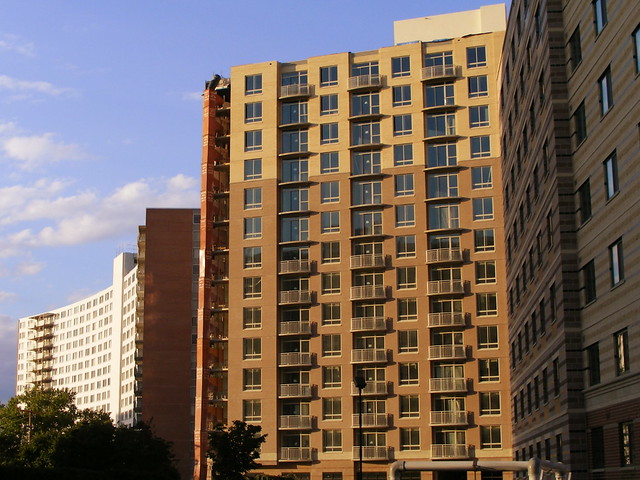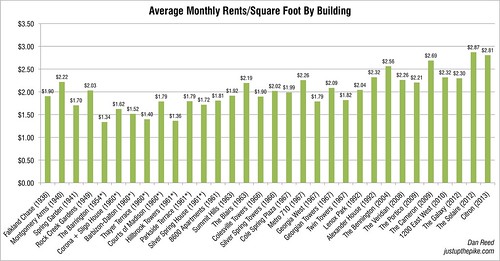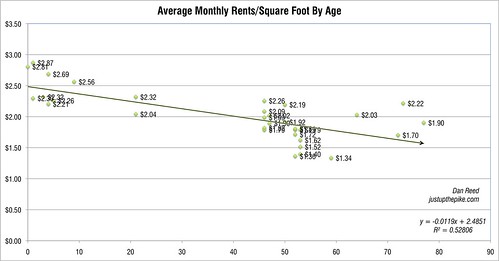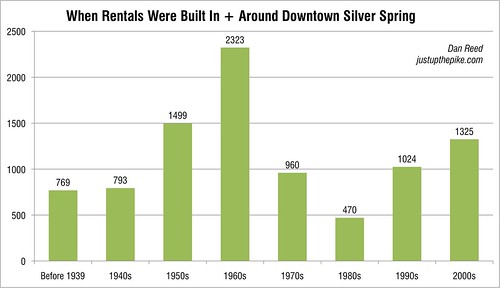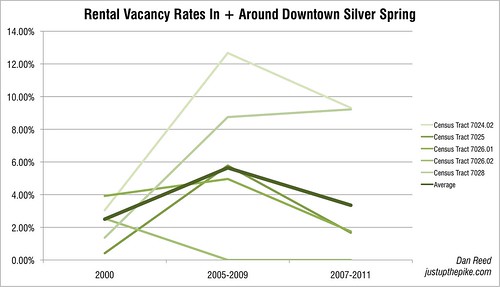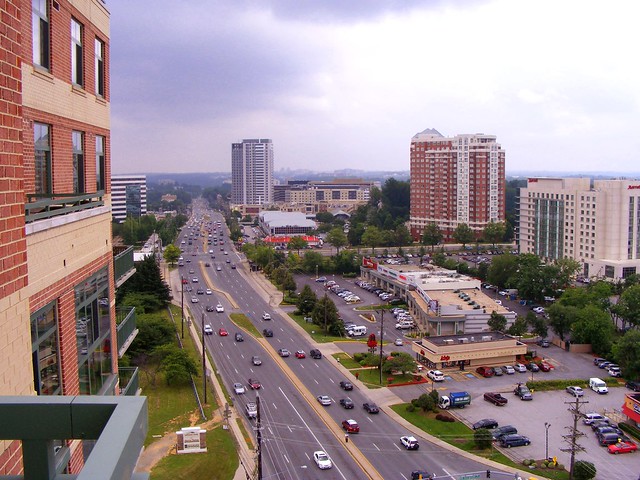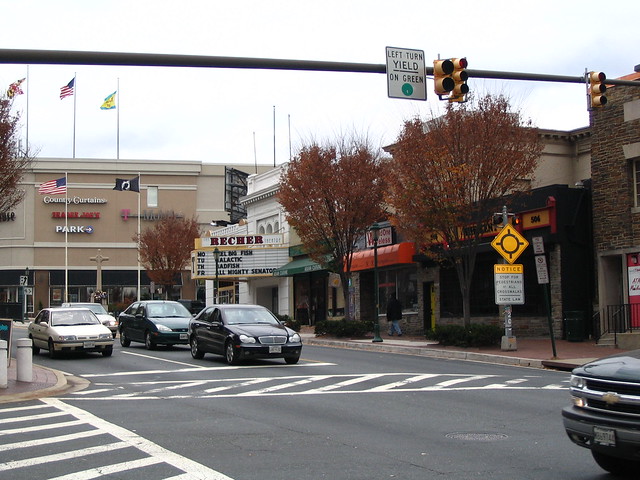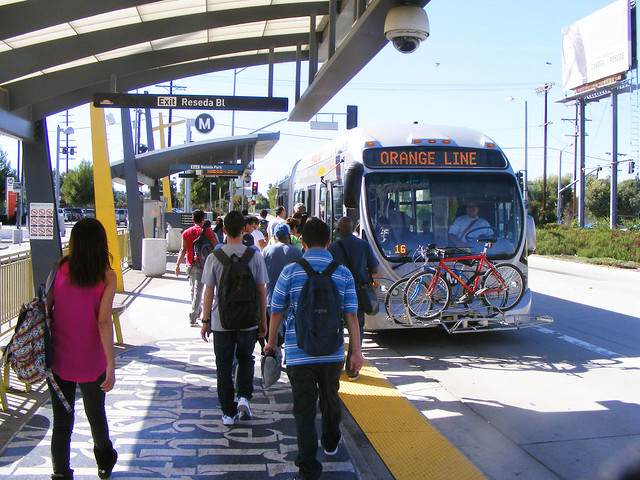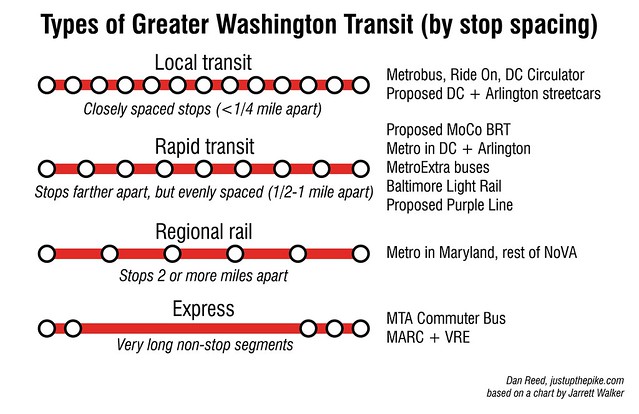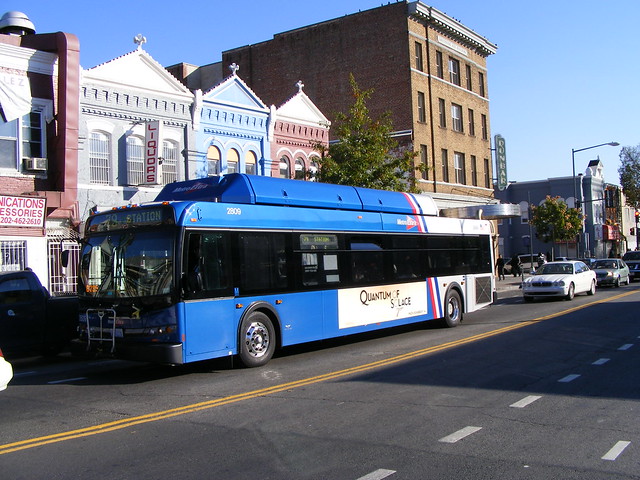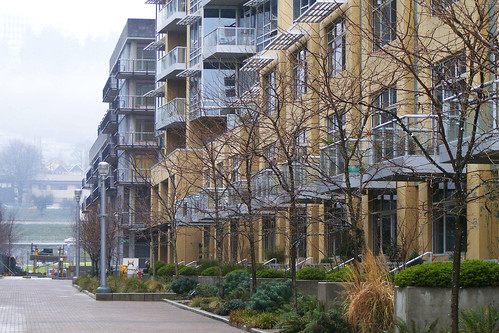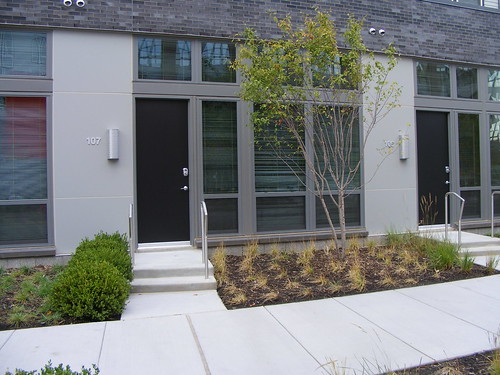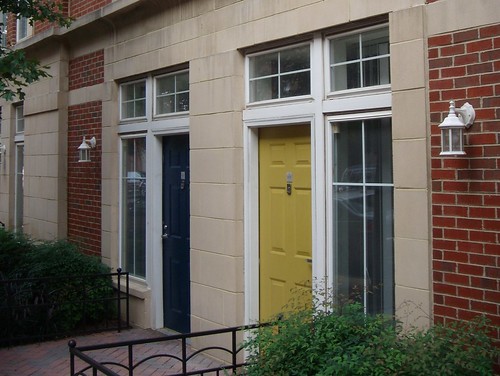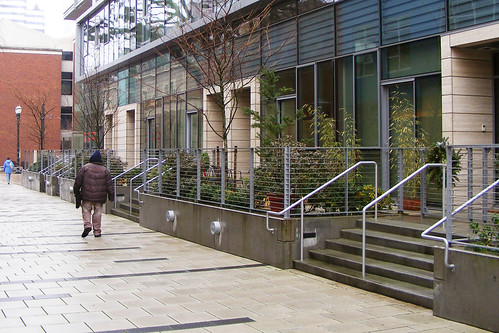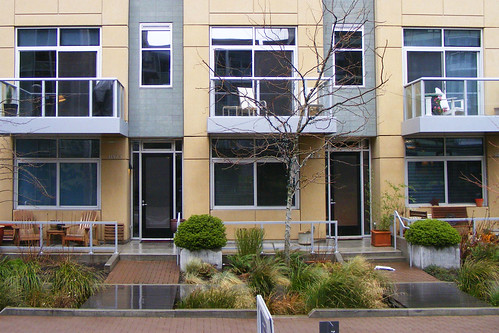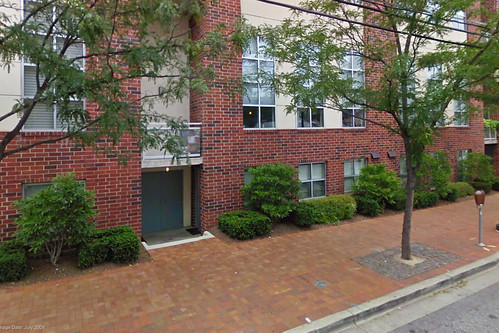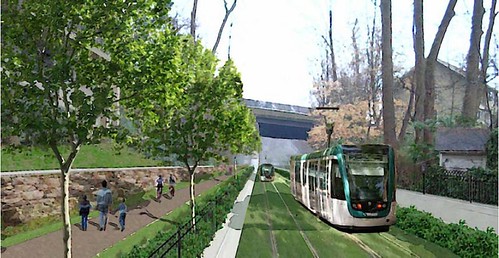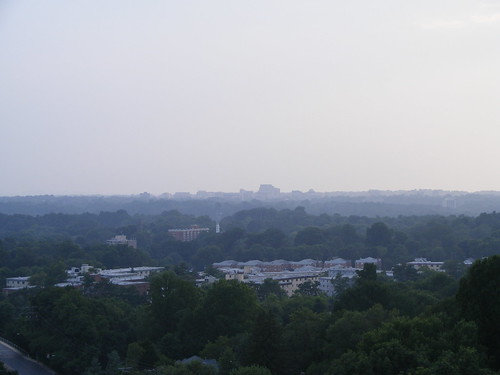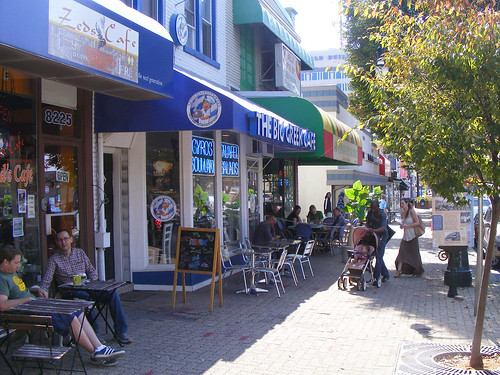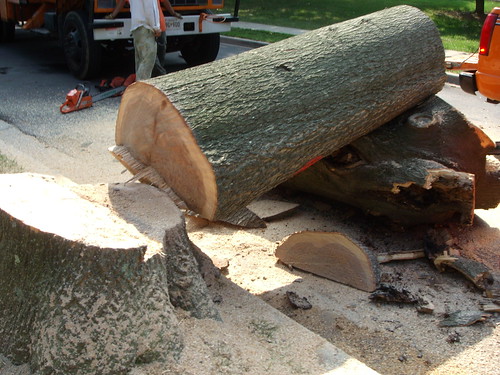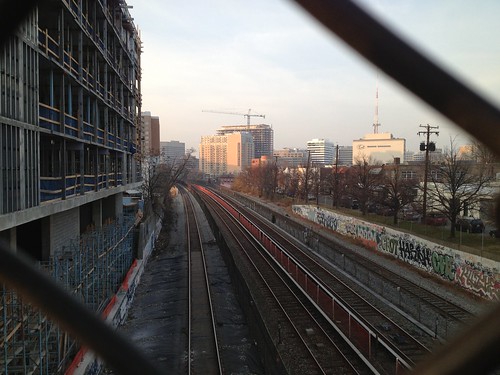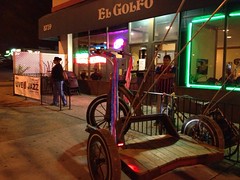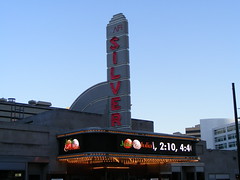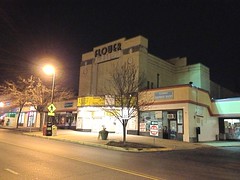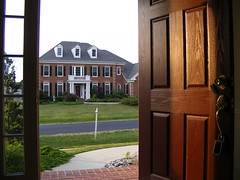I was pleasantly surprised by the positive response to Monday's post analyzing rental housing trends in and around downtown Silver Spring. There were lively comment threads both here and on GGW and was picked up by UrbanTurf and Patch.
The post was also tweeted and retweeted many times on Twitter and even got a mention of sorts from Matt Yglesias of Slate magazine. After some gentle prodding by Silver Spring resident/Towson University economics professor Seth Gitter, the well-known writer had this to say:
As someone who doesn't have a background in economics, I'm honored to hear that from a writer whose work and opinions I deeply respect. (It would've been nice if he included a link to the post, but why nitpick?) Update: He did! Hopefully my next attempt to analyze local housing trends will be as well received.
ALSO: Friend of JUTP/fellow Bengal alum Aaron Kraut of Bethesda Now came to our happy hour sponsored by Friends of White Flint and the Coalition for Smarter Growth last night and offered this great recap.
Councilmembers Hans Riemer and Roger Berliner were in attendance and had great things to say about the future of both White Flint and Montgomery County as a whole:
The post was also tweeted and retweeted many times on Twitter and even got a mention of sorts from Matt Yglesias of Slate magazine. After some gentle prodding by Silver Spring resident/Towson University economics professor Seth Gitter, the well-known writer had this to say:
@justupthepike @sethgitter I don’t have a ton to say. Very good post.
— Matt Yglesias (@mattyglesias) January 29, 2013
As someone who doesn't have a background in economics, I'm honored to hear that from a writer whose work and opinions I deeply respect. (
ALSO: Friend of JUTP/fellow Bengal alum Aaron Kraut of Bethesda Now came to our happy hour sponsored by Friends of White Flint and the Coalition for Smarter Growth last night and offered this great recap.
Councilmembers Hans Riemer and Roger Berliner were in attendance and had great things to say about the future of both White Flint and Montgomery County as a whole:
“I really think that we are on the verge of a golden age in Montgomery County and it’s projects like this that are bringing that life,” Riemer told the gathering. “The region that we are in is a dynamic, growing, exciting region, one of the best destinations in the whole world, economically, culturally, socially. But we have to and we are positioning ourselves in that region to capture that future growth" . . .
[Berliner said] the county is depending on the change of thinking signaled by what’s going on in White Flint.
“I want you to know when I first used [the word hip] in talking about Montgomery County, people said, ‘I’m sorry, that’s not part of our lexicon,’” Berliner said. “I do want you to know that Montgomery County’s future in my judgement does in large part depend on being able to attract this kind of crowd, a young, energetic crowd.”

